There is a publishing boom in fiction by authors from the Indian subcontinent. Indian, Pakistani, Sri Lankan, and Bangladeshi authors are being discovered almost daily. The literature from India is several thousand years old. However, following the notoriety of Salman Rushdie, the meteoric success of Arundhati Roy’s novel The God of Small Things, and the Oscar-winning screen adaptation of Michael Ondaatje’s The English Patient, it is almost impossible to open the New York Times Book Review without reading of another new highly-praised novelist from the region. Most of these authors write in English. Many are expatriates, living in Canada, England or the United States. These novels, with the variety of experiences described, in settings that are exotic and often unknown to the average high school or college student, are ideal for a Reading Across the Curriculum assignment in the social sciences. In the assignments, each student reads a work of fiction from an approved bibliography and writes a book review that applies the sociological, political, historical, and/or economic concepts that have been covered in class to the contents of the novel. Often the student is also required to research the cultural, ethnic, or national milieu in which the novel is written.
Instructors who have used fiction to teach social science classes report that their students seem more engaged in the content area because of their fictional explorations. The novels tend to make real the theoretical issues discussed in the classroom.
The Reading Across the Curriculum assignment has been developed to meet many educational objectives. First, because students are reading less, it is important to encourage them to read. Any librarian can cite statistics to document the problem. In my own library, periodical usage is down almost 80 percent from pre-Internet days. Book circulation has taken a 30 percent dive. In addition, textbooks that prepackage excerpts from larger works are the sine qua non of most courses. The days when a student was required to read several complete works in the course of a semester largely exist in the memories of aging baby boomers. It is easy to blame the Internet or television, either of which, with quick hits and sound bites, encourages the short attention span of high school and young undergraduate students. It is also possible to craft reading assignments to counter this trend.
Second, many educational institutions are including international education and diversity initiatives in their mission state- ments. At my own college, the Liberal Arts Division mission statement says, “Johnson County Community College will actively promote the understanding and appreciation of diversity . . . through the implementation of curriculum initiatives and activities as a natural part of the educational process in order to create an environment that values all people.” Using an international or multicultural reading assignment allows an instructor to incorporate an international or diversity component into a course without substantially altering the teaching syllabus.
Third, the assignment of a novel not only encourages reading, but also encourages use of the library’s resources. It is unfortunately naive to assume that college students will go to the library to check out good literature for recreational pleasure. In my library, the novels with the highest circulation statistics are those on Reading Across the Curriculum bibliographies and the old-standbys by authors like Hemingway, Poe, and Fitzgerald, which are assigned routinely in high school, college, and even graduate school.
Fourth, it is difficult, perhaps impossible, to cut and paste together a paper that meets the goals of the Reading Across the Curriculum assignment. Thus, students are forced to think about the material and write a paper based on their own ideas. Given the nature of the writing required, an instructor can recognize plagiarism almost instantly. And since each student reviews a different book, each paper is somewhat unique.
While there are no statistical studies about the success of this type of assignment, there are anecdotal reports. Instructors who have used fiction to teach social science classes report that their students seem more engaged in the content area because of their fictional explorations. The novels tend to make real the theoretical issues discussed in the classroom.
I know of social science classes in which a bibliography of African or Latin American novels is used. I have also seen classes where a bibliography of international novels from a number of countries is used. I have not yet encountered a class that uses novels from the Indian subcontinent exclusively. Yet the region is larger than Europe, encompassing four countries, each with a variety of religious and ethnic groups. India alone recognizes fourteen official languages. Now, with so many authors being published, it is possible to compile an impressive bibliography of contemporary Indian fiction, which includes that of her close neighbors.
Virtually every novel on the bibliography addresses a number of significant issues. Here are three examples. Moth Smoke by Mohsin Hamid looks at the rampant political and economic corruption in Pakistan where the rich and powerful get away with virtually all the crimes they commit, while talented but poorly connected individuals like the protagonist Daru and his drug-dealing friend Murad must pander to the wealthy or turn to crime for economic success. Women in Moth Smoke, like Daru’s lover Mumtaz, are forced into subterfuge in order to pursue a career. Her work as an investigative journalist is published under a masculine pseudonym. A sociology student could use the novel as the focal point for a discussion of women’s issues or of crime in a society where most of the wealth is concentrated in a small percentage of families.
Nectar in a Sieve by Kamala Markandaya, tells the story of the arrival of a tannery in a traditional village. It shows how fragile a traditional agrarian society can be, and how little it takes to turn a prosperous small farmer into a beggar. Issues of class and caste, of the woman’s role in traditional society, of the exploitation of peasants by factory owners, and of family organization are all present in the novel.
Now, with so many authors being published, it is possible to compile an impressive bibliography of contemporary Indian fiction, which includes that of her close neighbors.
Finally, The God of Small Things, ostensibly the story of a tragic love affair between an upper-class woman and an untouchable man, delineates the persistence of caste in India. It is a marvelous example of politics gone mad when the Communist demonstrations, just to prove a point, force the closing of the pickle factory that has been the community’s economic mainstay. Again, it shows how little women are valued, even educated women. Just incidentally, it also is concerned with child sexual abuse and the resultant trauma. These three novels are only examples of the richness of the fiction for use in research papers focusing on issues discussed in the classroom.
Below is a selective, annotated bibliography of Indian, Pakistani, and Sri Lankan fiction. Following each citation, if it can be determined, I have noted the region or city and sometimes the religious group about which the author is writing. I have only included books that I have personally read, or at least examined. I have made no attempt to be comprehensive. I have included works by expatriate authors that examine the lives of immigrants, e.g., Jhumpa Lahiri and V. S. Naipaul, because of my belief that immigrants bring their cultures with them. The lives of Gujuratis in Trinidad or Bengalis in New England relate more to their experiences as Bengalis or Gujuratis than to life in their new homes. Many of the authors, like R. K. Narayan, Salman Rushdie, V. S. Naipaul and Anita Desai, are prolific writers, only a few of whose works I have cited. In the case of Vikram Seth, I have read and enjoyed but did not cite The Golden Gate, or An Equal Music because neither book introduces a student to the subcontinent or to the experiences of its immigrants abroad. The same rationale applies to the omission of Ondaatje’s English Patient, despite its one Sikh character. I have not yet read some authors, for example, Romesh Guneskera, Raj Kamal Jha, Amit Chaudhuri, Bapsi Sidhwa, and Kushwant Singh, and have perhaps inadvertently omitted other authors’ finest works. Like all bibliographies, it is a work in progress and will continue to grow.
An Annotated Bibliography of Fiction in English from the Indian Subcontinent
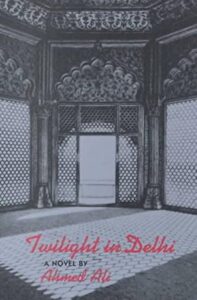 Ali, Ahmed. Twilight in Delhi (New York: New Directions, 1994).
Ali, Ahmed. Twilight in Delhi (New York: New Directions, 1994).
This novel, which was originally published by the Hogarth Press in 1940 after Virginia Woolf and E. M. Forster fought the printers who viewed the text as subversive, chronicles the life of a Moslem family, living in Delhi at the beginning of the twentieth century, who see their fortunes fading as the British work to eradicate Islamic culture. (Delhi, Moslem)
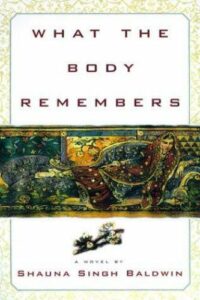 Baldwin, Shauna Singh. What the Body Remembers (New York: N. A. Talese, 1999).
Baldwin, Shauna Singh. What the Body Remembers (New York: N. A. Talese, 1999).
The brutal story of the partition of India and Pakistan is told through the eyes of two unusual Sikh women who are the co-wives of an engineer. He is also a prominent landowner in the Moslem part of the Punjab. (Kashmir, Sikh)
Desai, Anita. Baumgartner’s Bombay (London: Penguin, 1988).
A German-Jewish refugee from the Holocaust ends up in India where he is no more accepted as a European in India than he was as a Jew in Germany. (Calcutta, Mumbai)
Desai, Anita. The Clear Light of Day (London: Penguin, 1990).
Members of an old Delhi family come to terms with their past and reconcile the differences that parted them during the summer of Indian independence in 1947. (Delhi)
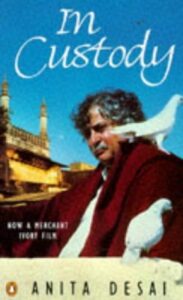 Desai, Anita. In Custody (New York: New Harper & Row, 1984).
Desai, Anita. In Custody (New York: New Harper & Row, 1984).
After a poor and unsuccessful college lecturer is manipulated into interviewing an old man known as the greatest living Urdu poet, he learns that he has taken on much more than he bargained for. (Delhi)
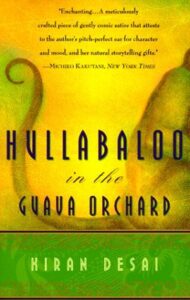 Desai, Kiran. Hullabaloo in the Guava Orchard (New York: Atlantic Monthly Press, 1998).
Desai, Kiran. Hullabaloo in the Guava Orchard (New York: Atlantic Monthly Press, 1998).
A misunderstood young man escapes his family and community by climbing a tree in a guava orchard and refusing to come down. This action causes the villagers to venerate him like a saint.
Deshpande, Shashi. The Dark Holds No Terrors (India: Penguin, 1990).
A successful woman doctor flees her abusive husband. In the solitude of her father’s home, she is forced to face the various problems in her life with which she had never dealt. (Karnakata)
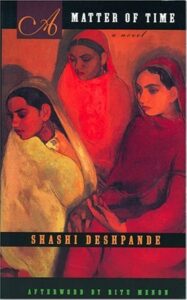 Deshpande, Sashi. A Matter of Time (New York: Feminist Press, 1999).
Deshpande, Sashi. A Matter of Time (New York: Feminist Press, 1999).
A woman and her daughters must cope with their unexpected abandonment by her husband, an act that mirrors her father’s behavior many years earlier. (Karnakata)
Deshpande, Shashi. That Long Silence (India: Penguin, 1989).
After her husband, a government official, is faced with possible disgrace and dismissal, the unhappy author of an advice column reassesses her career, her marriage, and her life. (Mumbai)
Divakaruni, Chitra Bannerjee. An Arranged Marriage (New York: Anchor Books, 1995).
These short stories examine the difference between the lives of women in India and the United States.
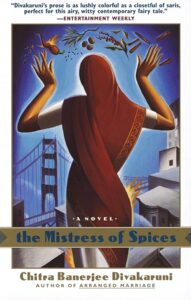 Divakaruni, Chitra Bannerjee. The Mistress of Spices (New York: Anchor Books, 1997).
Divakaruni, Chitra Bannerjee. The Mistress of Spices (New York: Anchor Books, 1997).
A wonder-working Indian woman, who runs a spice shop in Oakland, discovers that in order to keep her vows, she must give up love. However, love matters more.
Ghosh, Amitav. The Calcutta Chromosome (New York: Avon, 1996).
This is a futuristic novel about the transmigration of souls through the bites of certain mosquitoes, bites that may provide eternal life. (Calcutta)
Hamid, Moshin. Moth Smoke (New York: Farrar, Straus, & Giroux, 2000).
This Pakistani version of The Great Gatsby follows the downfall of a former bank employee whose descent into drug abuse and crime takes place during the explosive summer when India and Pakistan both test their atomic weapons. (Lahore)
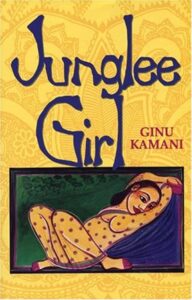 Kamani, Ginu. Junglee Girl (San Francisco: Aunt Lute, 1995).
Kamani, Ginu. Junglee Girl (San Francisco: Aunt Lute, 1995).
These short stories are about the difficult role of women and about very difficult women, most of whom live in the state of Gujurat. (Gujurat)
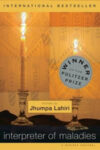 Lahiri, Jhumpa. The Interpreter of Maladies (New York: Houghton Mifflin, 2000).
Lahiri, Jhumpa. The Interpreter of Maladies (New York: Houghton Mifflin, 2000).
This collection of short stories, which won the Pulitzer Prize for fiction, describes the cultural dislocation of Indian immigrants to the United States, no longer at home in India, but not quite a part of their new home. (Bengal)
Markandaya, Kamala. Nectar in a Sieve (New York: John Day, 1955).
The lives of a tenant farmer and his family are irrevocably altered by the arrival of a tannery in their village.
Mehta, Gita. A River Sutra (New York: N. A. Talese, 1993).
A bureaucrat flees from life by taking a position as the manager of a guesthouse on the banks of the Narmada River. There he discovers the meaning of life through the tales of the travelers he meets. (Narmada River)
Mishra, Pankaj. The Romantics (New York: Random House, 2000).
A young man, who is preparing for the civil service examination, becomes friends with members of the expatriate community, all of whom are searching for a deeper meaning to life and hope to find it in India. (Varanasi)
Mistry, Rohinton. A Fine Balance (New York: Vintage, 1997).
A group of refugees, fleeing religious and ethnic violence, forge an unlikely community in the apartment of an independent widow. (Mumbai, Parsi)
Mistry, Rohinton. Such a Long Journey (New York: Vintage Books, 1992).
The fortunes of a Parsi family in Mumbai diminish as Hindu supremacy, economic change and entanglement in a secret service plot during a war with Pakistan effect their lives. (Mumbai, Parsi)
Mistry, Rohinton. Tales from Firozsha Baag (Boston: Houghton Mifflin, 1989).
These interlocking short stories describe the life of the Parsi residents of an apartment house in Mumbai. (Mumbai, Parsi)
Mukherjee, Bharati. Jasmine (New York: Grove Press, 1989).
A young woman from India makes her way in the United States, despite the fact that she is an illegal immigrant.
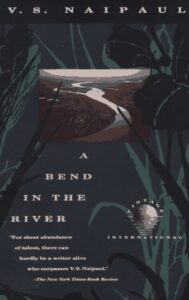 Naipaul, V. S. A Bend in the River (New York: Knopf, 1979).
Naipaul, V. S. A Bend in the River (New York: Knopf, 1979).
An Indian merchant, living in an unnamed country in Africa, attempts to survive as his country goes from one revolution to another.
Naipaul, V. S. A House for Mr. Biswas (New York: Knopf, 1983).
An Indian living in Trinidad seeks to achieve the true happiness of owning a house of his own. Many critics view this novel, originally published in 1961, as Naipaul’s finest work and the outstanding fictional account about the life of Indian expatriates in the Caribbean.
Narayan, R. K. The Guide (New York: Viking, 1958).
A tourist guide who lives by his wits meets his downfall through his adulterous love of a dancer, yet inadvertently ends up venerated as a holy man. The plot of Kiran Desai’s Hullabaloo in the Guava Orchard bears an uncanny resemblance to The Guide. (Tamil Nadu)
Narayan, R. K. A Horse and Two Goats (New York: Viking, 1970).
This is a collection of stories about village life in the Tamil-speaking region of southern India. (Tamil Nadu)
Narayan, R. K. The Painter of Signs (New York: Viking, 1976).
An educated young man, who prides himself on his logic, falls in love with a militant family planner. (Tamil Nadu)
Nigam, Sanjay. The Snake Charmer (New York: Morrow, 1998).
When his beloved snake bites him, a snake charmer, in a fit of rage, bites back, killing the snake and achieving his fifteen minutes of fame in the Indian media. (Delhi)
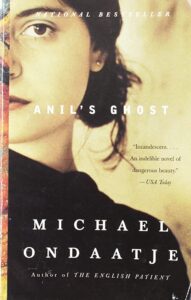 Ondaatje, Michael. Anil’s Ghost (New York: Knopf, 2000).
Ondaatje, Michael. Anil’s Ghost (New York: Knopf, 2000).
A forensic pathologist returns to her home in Sri Lanka to examine the corpses of presumed torture victims during the civil war. (Sri Lanka)
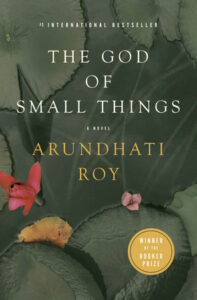 Roy, Arundhati. The God of Small Things (New York: Random House, 1997).
Roy, Arundhati. The God of Small Things (New York: Random House, 1997).
A twin brother and sister watch their world fall apart when their mother dares to love outside her caste. This novel won the Booker Prize. (Kerala)
Rushdie, Salman. Midnight’s Children (New York: Knopf, 1981).
This satiric novel about the creation of the modern Indian state is narrated in magic realism style. It follows the fortunes of those children who were born at midnight of the day independence was declared. This novel won the Booker Prize.
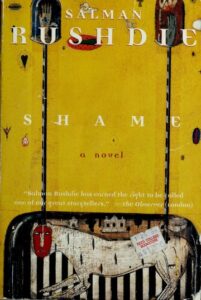 Rushdie, Salman. Shame (New York: Knopf, 1983).
Rushdie, Salman. Shame (New York: Knopf, 1983).
This is the author’s fanciful retelling of the history of modern Pakistan.
Seth, Vikram. A Suitable Boy (New York: HarperCollins, 1993).
This more than 1,300-page-long novel relates the interconnected stories of four Indian families during the 1950s. The central theme is the attempt to find a suitable husband for a young woman with several suitors. (Calcutta)
Tharoor, Shashi. The Great Indian Novel (New York: Little Brown, 1989).
The epic story of the Mahabharata is updated to tell the story of twentieth-century Indian history and politics.
Tharoor, Shashi. Show Business (New York: Arcade, 1992).
The novel follows the rise and fall of an ambitious actor/politician in “Bollywood,” Mumbai’s film industry. The author intends the novel to be a metaphor for what is wrong in Indian society. (Mumbai)

